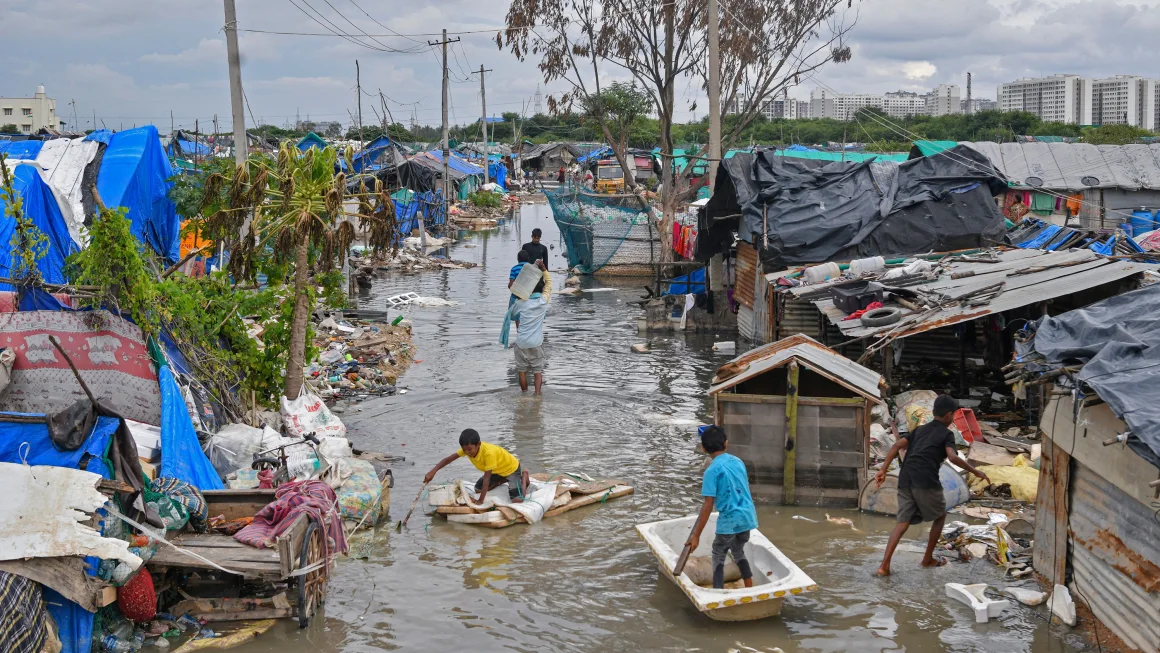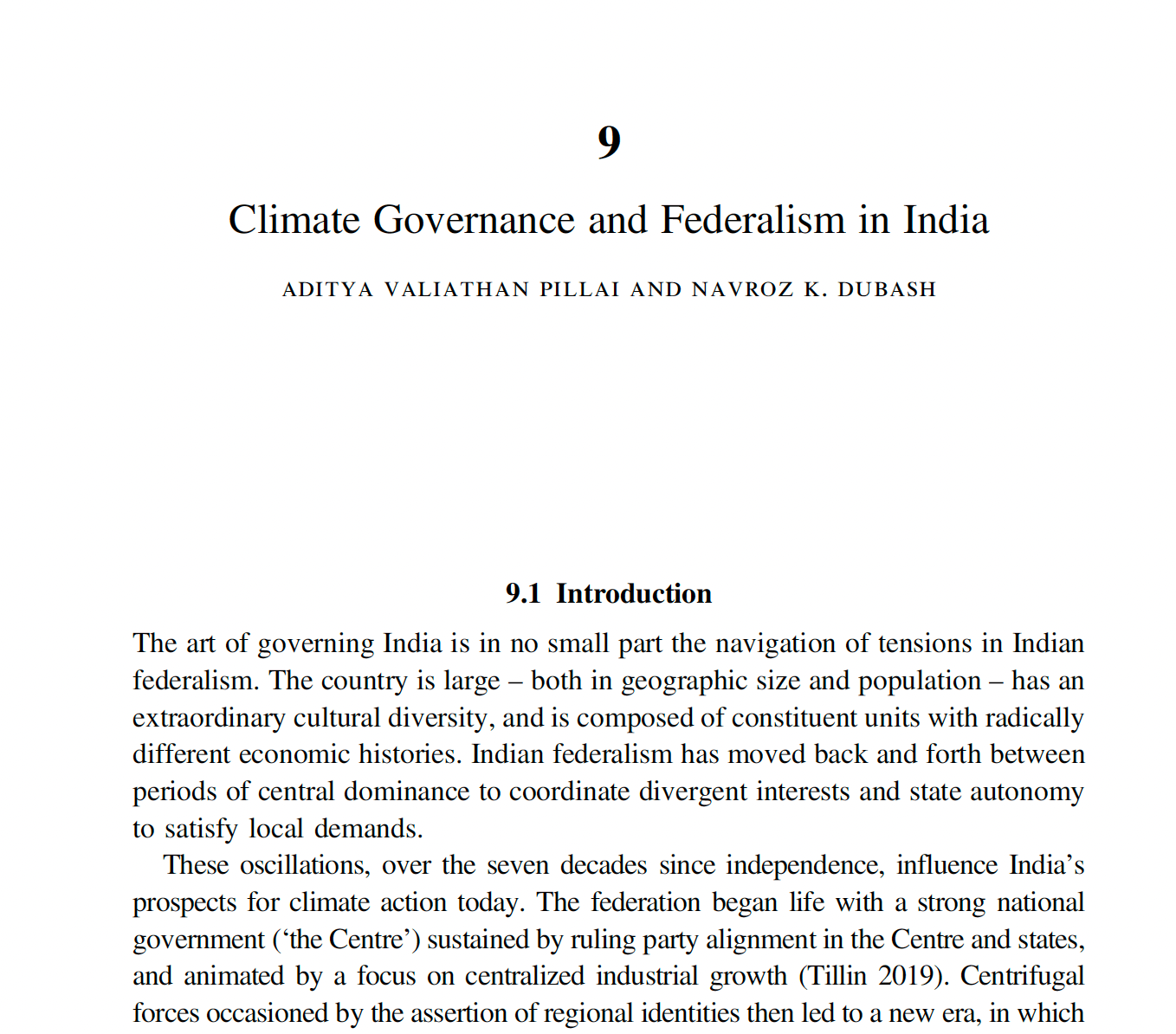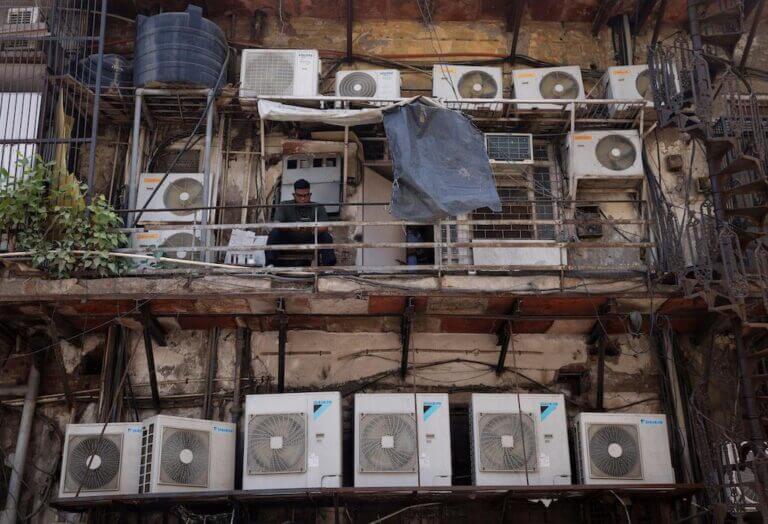Research area: Adaptation and Resilience
SFC Perspectives on Adaptation and Resilience, Climate Policy, Energy Transitions, and Environmental Governance and Policy
Overview
SFC Perspectives are intended to stimulate discussion by providing an overview of key issues and avenues for action to inform India’s sustainable development trajectory.
Read our Perspectives on:
1. Adaptation and Resilience: Building systems that allow India to adapt to climate impacts (by Aditya Valiathan Pillai and Tamanna Dalal)
2. Perspectives on Climate Policy: Embedding a development-centric, climate-ready approach to policymaking (by Aman Srivastava, Easwaran J Narassimhan and Navroz K Dubash)
3. Enabling the Energy Transition: Technology, politics & institutions in India’s energy system (by Ashwini K Swain, Sarada Prasanna Das, Suravee Nayak, Catherine Ayallore and Navroz K Dubash)
4. Perspectives on Environmental Governance and Policy: Systemic transformations to limit the health burden of air pollution (by Bhargav Krishna, Shibani Ghosh, Arunesh Karkun and Annanya Mahajan)
Perspectives on Adaptation and Resilience: Building systems that allow India to adapt to climate impacts
Introduction
Climate projections and the lived reality of weather events drive calls for urgent and concerted attention to climate adaptation. But what does this mean in practice? Indeed, seen through a conservative lens, one could quite convincingly argue that India and several other climate vulnerable countries have a long and storied history of reducing disaster mortalities in some areas. They should – in theory – be able to build sufficient reactive capacity to deal with climate impacts. Both India and Bangladesh have, for example, used policy and awareness building tools to drastically reduce annual deaths due to cyclones. This perspective paper, however, argues that the scale and complexity of the climate challenge merits serious consideration of systemic change, and a re-examination of what is needed for economy and society to thrive in an era of frequent, and often ravaging, climate impacts.
This effort is particularly relevant to India’s present developmental moment. Three decades of sustained growth have established an economy characterised by expanded trade, infrastructural advances, and both greater wealth and inequality. This emergence coincides uneasily with alarming manifestations of a changing climate. India’s deep vulnerability to climate change is likely to worsen
as impacts become more frequent and intense in its teeming cities, along a 6100 km-long coastline, and across a mountain range that supplies water to a third of the world’s population. How does a modern economy simultaneously protect the gains of hardwon growth while climate-proofing the future? And, as the Indian state evolves, how should it shape itself to be appropriately responsive to these new threats?
Impact of heatwaves on all-cause mortality in India: A comprehensive multi-city study
Background
Heatwaves are expected to increase with climate change, posing a significant threat to population health. In India, with the world’s largest population, heatwaves occur annually but have not been comprehensively studied. Accordingly, we evaluated the association between heatwaves and all-cause mortality and quantifying the attributable mortality fraction in India.
Methods
We obtained all-cause mortality counts for ten cities in India (2008–2019) and estimated daily mean temperatures from satellite data. Our main extreme heatwave was defined as two-consecutive days with an intensity above the 97th annual percentile. We estimated city-specific heatwave associations through generalised additive Poisson regression models, and meta-analysed the associations. We reported effects as the percentage change in daily mortality, with 95% confidence intervals (CI), comparing heatwave vs non-heatwave days. We further evaluated heatwaves using different percentiles (95th, 97th, 99th) for one, two, three and five-consecutive days. We also evaluated the influence of heatwave duration, intensity and timing in the summer season on heatwave mortality, and estimated the number of heatwave-related deaths.
Findings
Among ∼ 3.6 million deaths, we observed that temperatures above 97th percentile for 2-consecutive days was associated with a 14.7 % (95 %CI, 10.3; 19.3) increase in daily mortality. Alternative heatwave definitions with higher percentiles and longer duration resulted in stronger relative risks. Furthermore, we observed stronger associations between heatwaves and mortality with higher heatwave intensity. We estimated that around 1116 deaths annually (95 %CI, 861; 1361) were attributed to heatwaves. Shorter and less intense definitions of heatwaves resulted in a higher estimated burden of heatwave-related deaths.
Conclusions
We found strong evidence of heatwave impacts on daily mortality. Longer and more intense heatwaves were linked to an increased mortality risk, however, resulted in a lower burden of heatwave-related deaths. Both definitions and the burden associated with each heatwave definition should be incorporated into planning and decision-making processes for policymakers.
Read moreHimalayas: How Pattern Of Natural Disasters Leaves Locals In Cycle Of Construction And Destruction
Heatwaves will get worse. Invest in adapting now.
Climate Governance and Federalism in India
Summary
The chapter puts forward a synthetic account of the forces shaping climate governance in India’s federal architecture, building on descriptions of environmental federalism (Arora and Srivastava 2019; Chakrabarti and Srivastava 2015; Huang and Gupta 2014); state actions in climate policy (Dubash and Jogesh 2014; Jorgensen et al. 2015; Kumar 2018); and several recent policy moves by both the Centre and states. It describes India’s federal architecture and environmental governance processes before showing how the federal system is adapting to the climate challenge. The chapter also reflects on the inherent vulnerabilities of this form of climate governance.
The volume (Climate Governance and Federalism: A Forum of Federations Comparative Policy Analysis Cambridge University Press) brings together leading experts to explore whether federal or decentralised systems help or hinder efforts to mitigate and adapt to climate change. It reviews the opportunities and challenges federalism offers for the development and implementation of climate mitigation and adaptation policies and identifies the conditions that influence the outcomes of climate governance. Including in-depth case studies of 14 different jurisdictions, this is an essential resource for academics, policymakers and practitioners interested in climate governance, and the best practices for enhancing climate action.










